
Concept explainers
(a)
Interpretation:
The major product of the given electrophilic addition reaction is to be predicted.
Concept introduction:
Strong Bronsted acids add to the double bond in a two-step electrophilic addition reaction to replace the
Answer to Problem 11.52P
The major product of the given reaction is
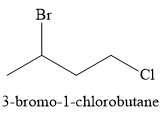
Explanation of Solution
The given reaction is
The substrate is an
In the first step, the

In the second step, the conjugate base

Thus, for the given reaction, the major product formed is

Strong Bronsted acids add to a double bond, replacing the
(b)
Interpretation:
The major product of the given electrophilic addition reaction is to be predicted.
Concept introduction:
In a two-step electrophilic addition reaction, the strong Bronsted acids add to the double bond to replace the
Answer to Problem 11.52P
For the given reaction, the major product formed is,
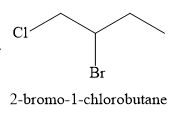
Explanation of Solution
The given electrophilic addition reaction is
The first step of the reaction is electrophilic addition of the proton from the acid. Two carbocations are possible when the

The conjugate base
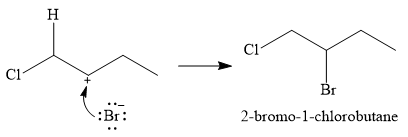
Thus, for this reaction, the major product formed is,

Strong Bronsted acids add to a double bond, replacing the
(c)
Interpretation:
The major product of the given electrophilic addition reaction is to be predicted.
Concept introduction:
In a two-step electrophilic addition reaction, the strong Bronsted acids add to the double bond to replace the
Answer to Problem 11.52P
For this reaction, the major product formed is,
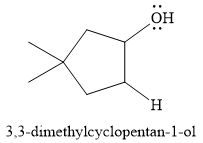
Explanation of Solution
The given reaction is
The overall reaction is one of hydration of the double bond, i.e., the addition of water. Water is a weak acid, but in the presence of a strong acid (denoted by the

In the next step, the conjugate base

Thus, for this reaction, the major product formed is,

Strong Bronsted acids add to a double bond, replacing the
(d)
Interpretation:
The major product of the given electrophilic addition reaction is to be predicted.
Concept introduction:
In a two-step electrophilic addition reaction, the strong Bronsted acids add to the double bond to replace the
Answer to Problem 11.52P
For the given reaction, the major product formed is,
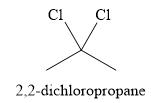
Explanation of Solution
The given reaction is
There are two
In the first step, an alkenyl carbocation is formed by addition of proton the triple bond. A more stable carbocation, with the positive charge on the secondary carbon, is produced.

In the second step, the conjugate base

Since the product has a

Thus, for this reaction, the major product formed is,

Strong Bronsted acids add twice to a triple bond, replacing each
(e)
Interpretation:
The major product of the given electrophilic addition reaction is to be predicted.
Concept introduction:
In a two-step electrophilic addition reaction, the strong Bronsted acids add to the double bond to replace the
Answer to Problem 11.52P
For the given reaction, the major product formed is,
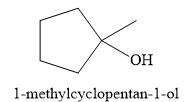
Explanation of Solution
The given electrophilic addition reaction is
![]()
The acid in this case is

This carbocation is prone to rearrangement. A

The conjugate base

Thus, for the given reaction, the major product formed is,

Strong Bronsted acids add to a double bond, replacing the
Want to see more full solutions like this?
Chapter 11 Solutions
Organic Chemistry: Principles And Mechanisms: Study Guide/solutions Manual (second)
- CH, CH CH₂ CH₂ Phytyl side chain 5. What is the expected order of elution of compounds A-D below from a chromatography column packed with silica gel, eluting with hexane/ethyl acetate? C D OHarrow_forwardPlease analze my gel electrophoresis column of the VRK1 kinase (MW: 39.71 kDa). Attached is the following image for the order of column wells and my gel.arrow_forward2.0arrow_forward
- Write the electron configuration of an atom of the element highlighted in this outline of the Periodic Table: 1 23 4 5 6 7 He Ne Ar Kr Xe Rn Hint: you do not need to know the name or symbol of the highlighted element! ☐arrow_forwardCompare these chromatograms of three anti-psychotic drugs done by HPLC and SFC. Why is there the difference in separation time for SFC versus HPLC? Hint, use the Van Deemter plot as a guide in answering this question. Why, fundamentally, would you expect a faster separation for SFC than HPLC, in general?arrow_forwardA certain inorganic cation has an electrophoretic mobility of 5.27 x 10-4 cm2s-1V-1. The same ion has a diffusion coefficient of 9.5 x 10-6cm2s-1. If this ion is separated from cations by CZE with a 75cm capillary, what is the expected plate count, N, at an applied voltage of 15.0kV? Under these separation conditions, the electroosmotic flow rate was 0.85mm s-1 toward the cathode. If the detector was 50.0cm from the injection end of the capillary, how long would it take in minutes for the analyte cation to reach the detector after the field was applied?arrow_forward
- 2.arrow_forwardPlease solve for the following Electrochemistry that occursarrow_forwardCommercial bleach contains either chlorine or oxygen as an active ingredient. A commercial oxygenated bleach is much safer to handle and less likely to ruin your clothes. It is possible to determine the amount of active ingredient in an oxygenated bleach product by performing a redox titration. The balance reaction for such a titration is: 6H+ +5H2O2 +2MnO4- à 5O2 + 2Mn2+ + 8H2O If you performed the following procedure: “First, dilute the Seventh Generation Non-Chlorine Bleach by pipetting 10 mL of bleach in a 100 mL volumetric flask and filling the flask to the mark with distilled water. Next, pipet 10 mL of the diluted bleach solution into a 250 mL Erlenmeyer flask and add 20 mL of 1.0 M H2SO4 to the flask. This solution should be titrated with 0.0100 M KMnO4 solution.” It took 18.47mL of the KMnO4 to reach the endpoint on average. What was the concentration of H2O2 in the original bleach solution in weight % assuming the density of bleach is 1g/mL?arrow_forward
- 10.arrow_forwardProper care of pH electrodes: Why can you not store a pH electrode in distilled water? What must you instead store it in? Why?arrow_forwardWrite the electron configuration of an atom of the element highlighted in this outline of the Periodic Table: 1 23 4 569 7 He Ne Ar Kr Xe Rn Hint: you do not need to know the name or symbol of the highlighted element! §arrow_forward
 Organic Chemistry: A Guided InquiryChemistryISBN:9780618974122Author:Andrei StraumanisPublisher:Cengage Learning
Organic Chemistry: A Guided InquiryChemistryISBN:9780618974122Author:Andrei StraumanisPublisher:Cengage Learning

